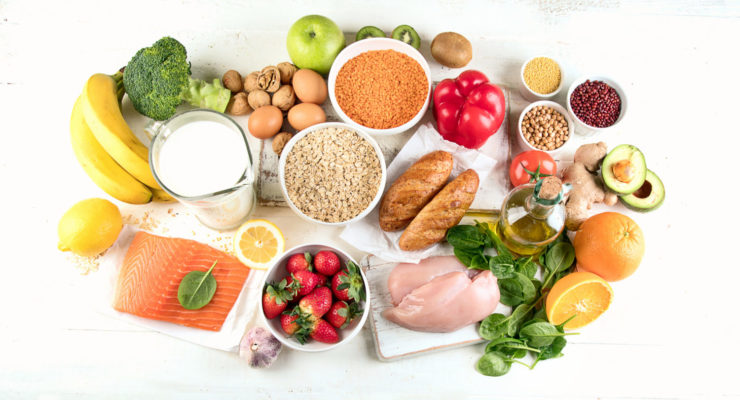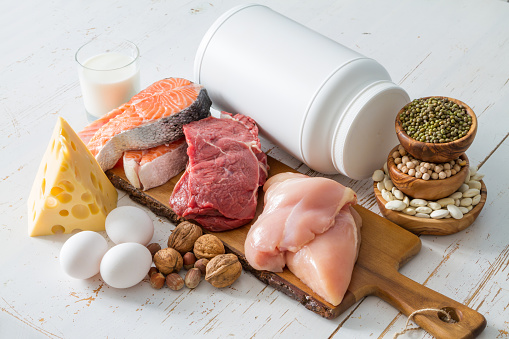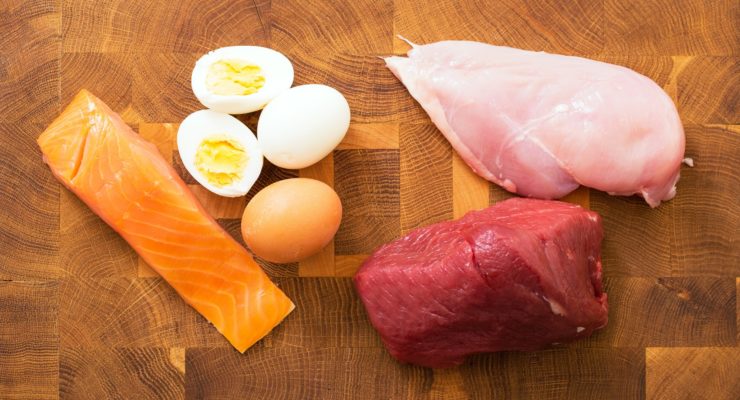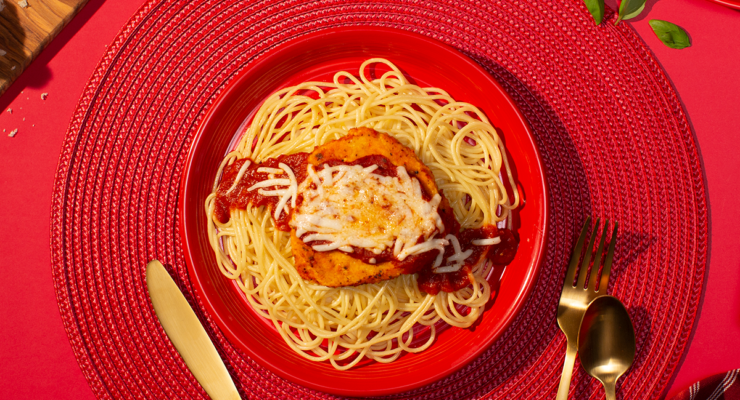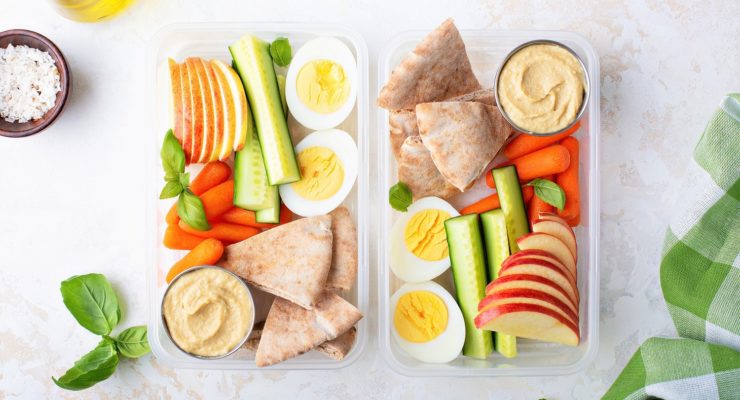6 Cheap and Budget-Friendly PowerFuels to Stock Up On
Article posted in: Nutrisystem for Men
Say the word “protein” and what comes to mind? Steak? Chicken? Pork? Fish? You might never think of pistachios, eggs, peanut butter or cheese. Yet they’re all healthy (and cheap!) sources of protein. On the Nutrisystem plan, they’re called “PowerFuels” because they contain essential amino acids and healthy fats, a combo that takes longer for your body to digest so they keep you feeling satisfied.
You probably got a jolt on your first pandemic supermarket shopping trip when you saw the price of meat—if you could find it. The increased price of meat was largely due to the temporary closing of meat packing plants as a result of COVID-19 cases among workers, says the United States Department of Agriculture (USDA). Poultry, fish and egg prices were already on the rise when they soared in the spring. According to the U.S. Bureau of Labor Statistics, “From May 2019 to May 2020, consumer prices for meats, poultry, fish, and eggs rose 10.0 percent, the largest 12-month percentage increase since the year ended May 2004.”
Though prices seem to be dropping, it’s a good idea to start stocking up on some cheap high protein foods. Not only are these healthy protein options good for your weight loss efforts, they’re also kinder to your wallet. Put these six cheap proteins on your next shopping list:
1. Eggs


Eggs are a great source of complete protein, so much so that they’re used as the gold standard to evaluate protein content in other foods, says Northwestern Medicine. They’re also valuable sources of choline and vitamin D, two vital nutrients that are hard to get in your diet.
Choline helps your metabolism, nerve function and brain development, says the National Institutes of Health Office of Dietary Supplements. Vitamin D boosts your immune system. Vitamin D deficiency may also play a role in obesity, according to a 2018 study, presented at the European Society of Endocrinology annual meeting. “The study reports that vitamin D levels are lower in individuals with higher levels of belly fat, and suggests that individuals, particularly the overweight with larger waistlines should have their vitamin D levels checked, to avoid any potentially health damaging effects,” says EurekAlert.org.
A 2020 study, published in the International Journal of Environmental Research and Public Health, found that eating eggs for breakfast helped a group of 50 overweight or obese study subjects feel fuller after their meal and eat less at their next meal.
Eggs are a bargain, even at their highest average price this year: $3.07 a dozen, according to the USDA Economic Research Service.
2. Nuts


While they’re higher in calories, nuts are an excellent source of protein and dietary fiber that can help you stay satisfied. “Several studies suggest that eating peanuts and other nuts can help people maintain their weight, or even help with weight loss,” says Medical News Today.
The price of different nuts can vary greatly. Certain types of nuts, such as pine nuts, can be a bit pricey. However, you can typically find some good deals at your local grocery store. Check out the bulk section and always consider the unit price. You can get a lot of PowerFuel servings out of one bag of almonds or cashews, making them a smart choice for your wallet. Choose unsalted varieties and avoid added flavors. Add your own spices and herbs to help you save on calories. Here are three of our favorite nuts:
Almonds
One study, published in the International Journal of Obesity, found that overweight participants who ate 384 calories in almonds lost 18 percent of their body weight, while another group who ate the same amount of calories and no almonds lost just 11 percent. The almond eaters also lost more weight around their waist.
Pistachios
Like other nuts, pistachios are full of filling, healthy protein. When you snack on the shelled version, you may slow down your eating time, thus cutting the number of nuts—and calories—you consume. In a study, published in the journal Appetite, 140 university students were given a 16-ounce cup filled with pistachios. Some cups contained shelled nuts, others were in the shell. The students who received the shelled nuts ate an average of 125 calories; the other group consumed 211 calories (41 percent more). “Fullness and satisfaction ratings were not significantly different,” says the researchers.
Walnuts
Walnuts come with a major bonus: They contain heart-healthy omega-3 fatty acids that have been shown to lower blood pressure and dangerous low-density lipoprotein (LDL) cholesterol. According to a study, published in Nutrition Journal, researchers compared a group of overweight men and women who ate a walnut-enriched diet to a similar group that ate a standard low-calorie diet. The walnut eaters lost more weight and reduced both their total cholesterol and LDL cholesterol. They also maintained the drop in their systolic blood pressure longer than the other group.
3. Peanut Butter


According to USA Today, “Through the beginning of 2020, the price of peanut butter had been in decline for seven years. But between February 2020 and June 2020, the price rose by 7.9%.”
That being said, peanut butter is still a cheap protein. You can typically get a 16-ounce jar for less than $5. Considering that one tablespoon is one PowerFuel serving, you can get a ton of PowerFuel servings out of this. (Other nut butters, alas, can be more than twice as expensive.) Try to find peanut butter that is free of added sugar.
Looking for some delicious and healthy recipes featuring this cheap protein? Here are 14 peanut butter recipes for your weight loss menu! >
4. Canned Salmon or Tuna


Salmon and tuna are both packed with lean protein and heart-healthy omega-3 fatty acids. “Research has shown that omega-3 fatty acids can reduce your risk of heart disease and stroke,” says the American Heart Association. In their relatively inexpensive canned forms, they are the ultimate in convenience foods. Whether you serve them in light mayonnaise-based dressing or on top of a veggie salad, you can’t go wrong with this cheap protein source.
One benefit of omega-3-rich foods like salmon is that they can lower inflammation, which is often higher in overweight and obese people, says the European Journal of Clinical Nutrition. A 2019 study, published in Nutrition Research Review, noted that eating seafood regularly instead of meat can reduce caloric intake by 4 to 9 percent and is associated with weight loss and improving insulin sensitivity in people who are insulin resistant.
You can get a six-pack of canned light tuna in water for less than $7 and a two-pack of wild caught Alaskan sockeye salmon (nearly two pounds) for only $15.94. That’s far less than you’d pay at the fish counter!
5. Low-Fat Cheese


Cheese has always been a dieter’s dilemma. It’s loaded with calories and saturated fat in its full-fat version. However, fat-free varieties are often tasteless with no melting point. Low-fat cheese is the happy medium! While cheese prices have gone up due to demand, the price per PowerFuel serving is still a bargain. Stock up on this cheap protein in the form of string cheese or pre-packaged deli slices.
Despite being lower in saturated fat, low-fat cheese still contains calcium. Calcium may do more than benefit your bones. According to a study, published in Obesity, increased calcium and dairy intake increased weight loss in study participants. “Increasing dietary calcium significantly augmented weight and fat loss secondary to caloric restriction and increased the percentage of fat lost from the trunk region, whereas dairy products exerted a substantially greater effect,” says researchers.
6. Greek Yogurt


In one small study at the University of Tennessee Knoxville, three servings of yogurt a day helped study participants lose 22 percent more weight and 61 percent more body fat than others who were on a weight loss diet. The key ingredient here may be the calcium which, the same researchers found, helps the body stop storing fat and start burning it.
Studies have found that even regular yogurt can make you feel fuller longer, says Nutrition Reviews. However, according to Harvard Health Publishing, Greek yogurt may be even more effective since it has more satisfying healthy protein than regular yogurt, thanks to a process that removes excess water. Stick to plain yogurt though to which you can add your own sweetener like stevia or toss into a fruity morning smoothie.

